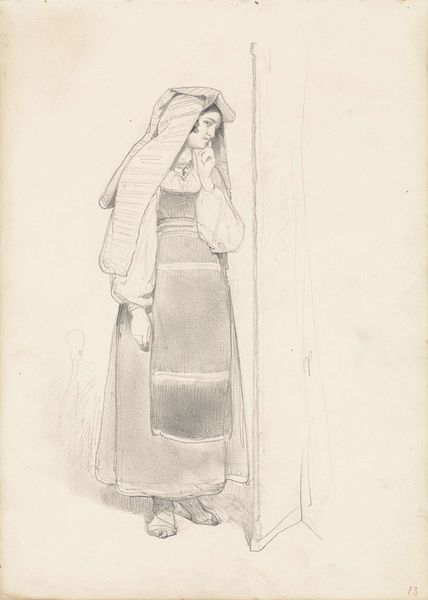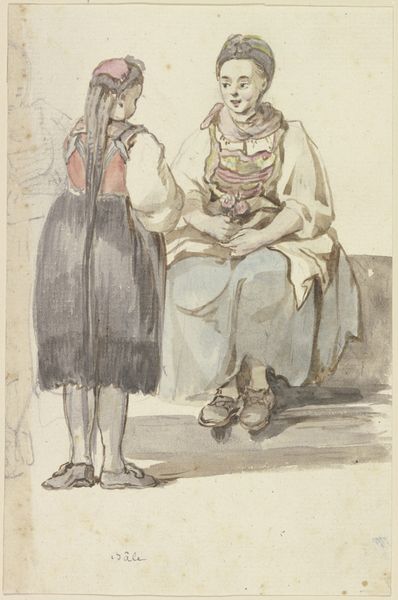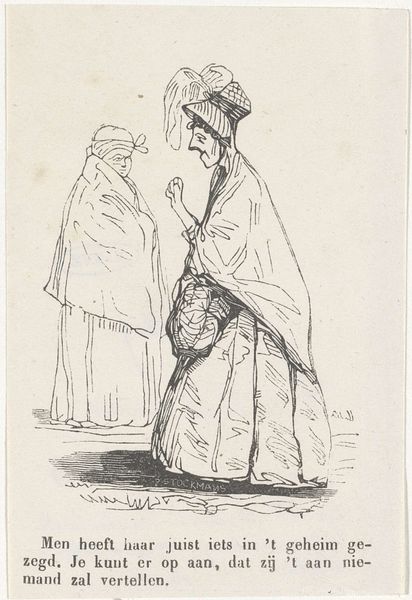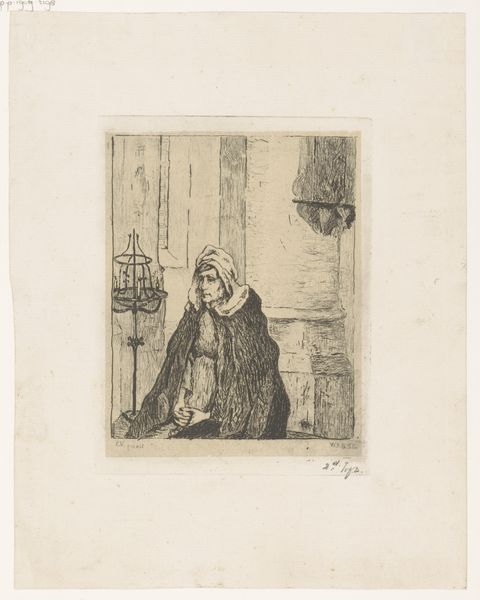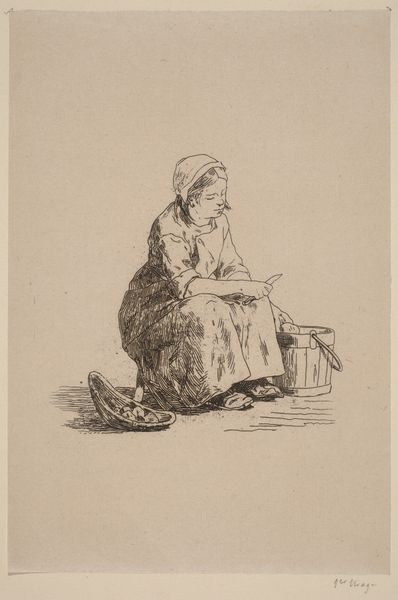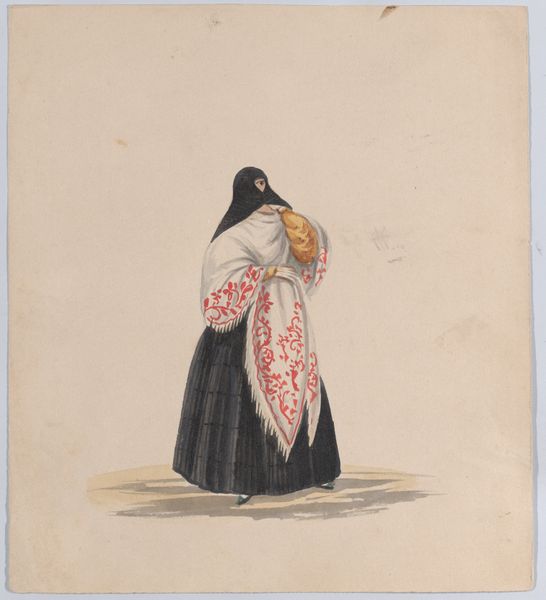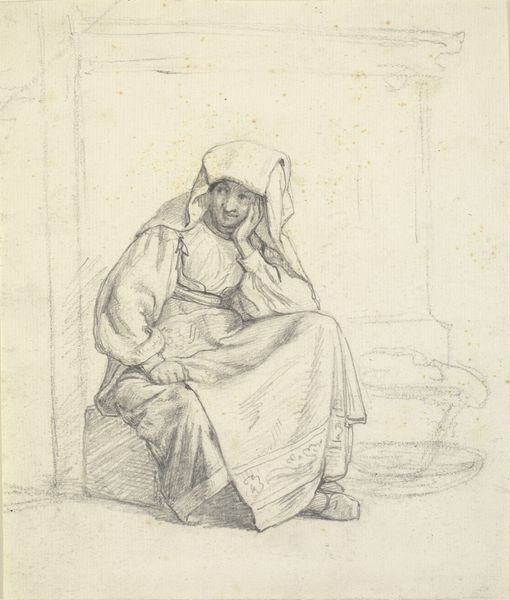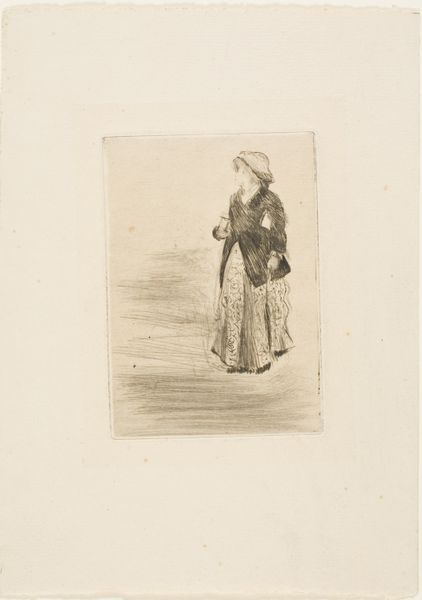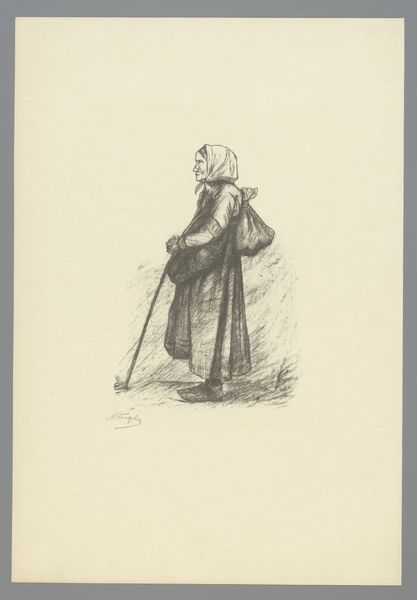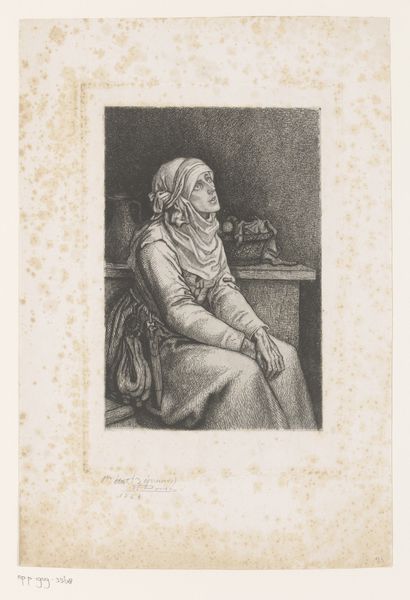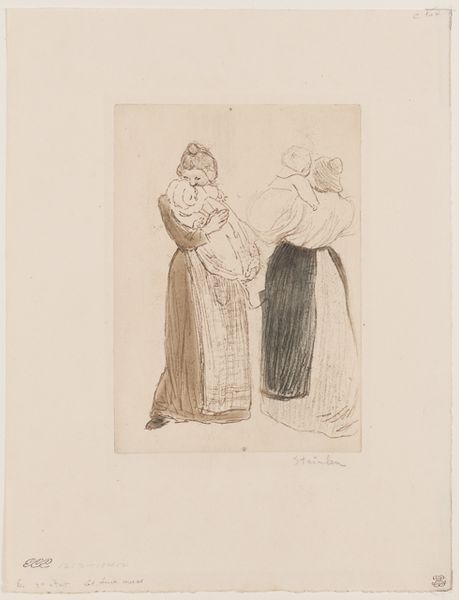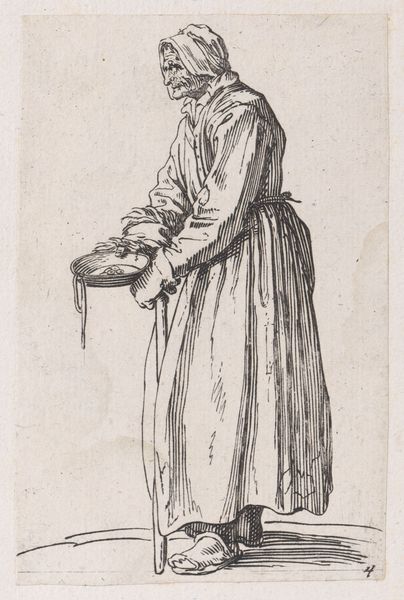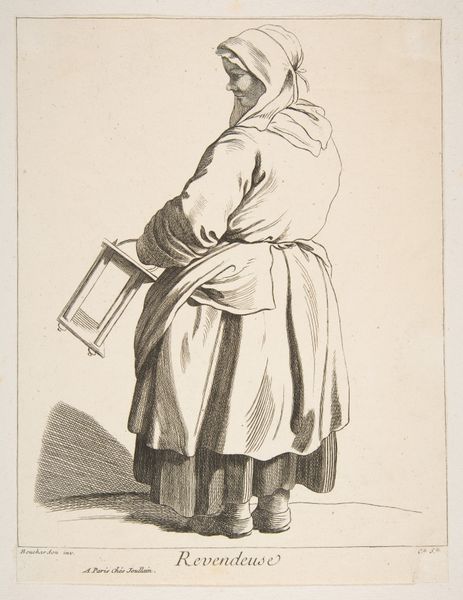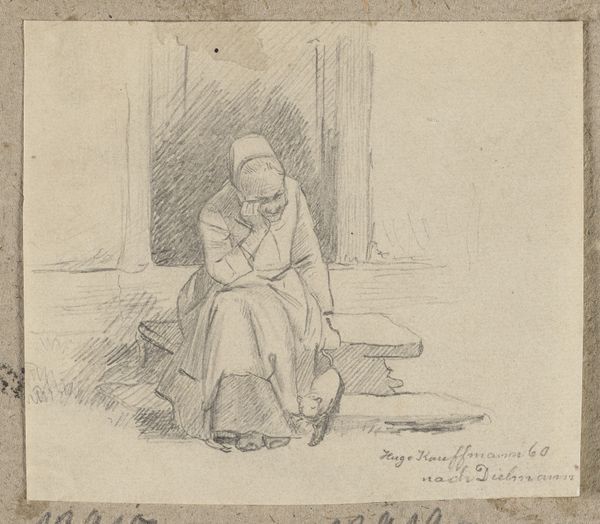
drawing, paper, pencil
#
portrait
#
drawing
#
ink drawing
#
pen sketch
#
pencil sketch
#
paper
#
romanticism
#
pencil
#
genre-painting
Dimensions: 269 mm (height) x 181 mm (width) (bladmaal)
Curator: So, here we have "Siddende gammel kvinde og en stående," or "Seated Old Woman and a Standing One," a pencil drawing from 1830 by Martinus Rørbye. My first thought? The air crackles with unspoken stories. Editor: Yes, there's an austerity to it, isn’t there? The gray tones, the woman's stern gaze...it speaks to the hardship of life. Makes you wonder about the stories etched on their faces. Is she a matriarch, holding the family together? Curator: Perhaps. Rørbye was fascinated by folklore and local customs; the detailed rendering of the women’s bonnets and clothing certainly highlights that. This drawing, now held at the SMK, could well be a document of a very specific time and place in Danish history, a record of how people lived. Editor: Absolutely. It is important to consider how Romanticism fueled this fascination. Looking for a true and authentic spirit of a nation can be difficult though; were the peasantry accurately captured or portrayed through the artist's romantic and, arguably, biased lens? It feels…performative, in a way. Curator: An interesting question! I agree that this tension definitely existed. He wants to capture a kind of raw essence, maybe even an idealized version. See the way he contrasts the sitting woman’s calm composure with the slight stiffness of the figure behind her? It's more than just observation. Editor: That careful observation of the clothing and those individual faces speaks volumes. Art becomes this potent vehicle to understand or maybe even idealize community and identity during periods of intense national soul-searching. Rørbye isn't merely drawing; he’s composing a visual narrative about Danish character. Curator: You’re right. He is carefully choosing the elements he wants to showcase, those aspects of Danish identity he wants to preserve, as the world changes around him. Looking closer, one almost can feel the weight of history. It’s both intimate and monumental, a trick only pencil strokes and subtle shades can produce. Editor: It does makes one wonder about their inner worlds, those silences captured on paper and about what’s hiding just out of the frame. Curator: Indeed! We’ve peeled back a few layers, perhaps sparking a deeper connection with these figures from another era. Thanks for walking through this quiet, evocative drawing.
Comments
No comments
Be the first to comment and join the conversation on the ultimate creative platform.
